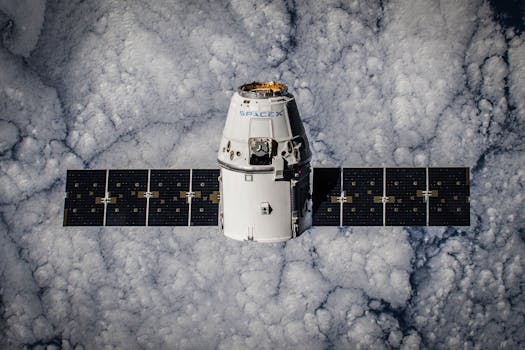Beyond the Atmosphere: The Future of Satellite Technology for Surveillance and Connectivity

Beyond the Atmosphere: The Future of Satellite Technology for Surveillance and Connectivity is an exciting and rapidly evolving field. Satellite technology has come a long way since the launch of the first artificial satellite, Sputnik, in 1957. Today, satellites play a crucial role in various aspects of our lives, from navigation and communication to weather forecasting and Earth observation.
Satellite technology has revolutionized the way we communicate, with satellites enabling global connectivity and providing internet access to remote and underserved areas. The launch of satellite constellations such as SpaceX’s Starlink and Amazon’s Kuiper Systems is expected to further expand satellite-based internet services, providing high-speed and low-latency connectivity to millions of people around the world.
In addition to connectivity, satellites are also being used for surveillance purposes, including military surveillance, Earth observation, and disaster response. Satellite imagery is being used to monitor climate change, track natural disasters, and detect early signs of disease outbreaks. The use of satellites for surveillance has also raised concerns about privacy and security, highlighting the need for regulations and guidelines to ensure the responsible use of satellite technology.
Applications of Satellite Technology
Satellite technology has a wide range of applications, including navigation, communication, weather forecasting, and Earth observation. Satellites are used in various industries, such as aviation, maritime, and agriculture, to provide critical services and support decision-making. The use of satellites in these industries has improved efficiency, reduced costs, and enhanced safety.
The use of satellite technology in navigation is one of its most significant applications. Satellite navigation systems, such as GPS, GLONASS, and Galileo, provide location information and timing signals to receivers on the ground, enabling precise navigation and positioning. These systems have become essential for modern transportation, including aviation, maritime, and land transportation.
Satellites are also used in communication, providing global coverage and connectivity to remote and underserved areas. Satellite communication systems, such as satellite phones and satellite internet, enable communication in areas where traditional communication infrastructure is limited or non-existent. The use of satellites in communication has improved global connectivity, facilitating international trade, commerce, and diplomacy.
Future Prospects of Satellite Technology
The future of satellite technology is exciting and rapidly evolving, with advancements in technology and innovations in applications. The launch of new satellite constellations, such as SpaceX’s Starlink and Amazon’s Kuiper Systems, is expected to further expand satellite-based internet services, providing high-speed and low-latency connectivity to millions of people around the world.
The use of satellites in surveillance is also expected to increase, with advancements in satellite imagery and sensor technology. Satellite imagery is being used to monitor climate change, track natural disasters, and detect early signs of disease outbreaks. The use of satellites in surveillance has also raised concerns about privacy and security, highlighting the need for regulations and guidelines to ensure the responsible use of satellite technology.
In conclusion, Beyond the Atmosphere: The Future of Satellite Technology for Surveillance and Connectivity is an exciting and rapidly evolving field. Satellite technology has come a long way since the launch of the first artificial satellite, Sputnik, in 1957. Today, satellites play a crucial role in various aspects of our lives, from navigation and communication to weather forecasting and Earth observation. As technology continues to advance, we can expect to see even more innovative applications of satellite technology in the future.

